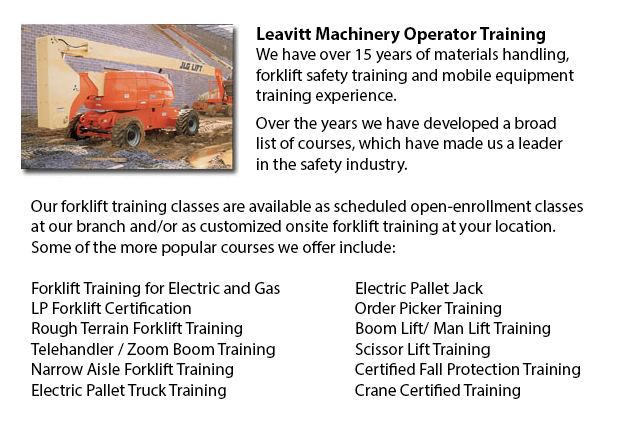
Markham Boom Lift Operator Training - A cherry picker is a type of aerial work platform. Cherry pickers have a bucket or platform at the hydraulic lifting system's end. The machine is also called a man lift, boom lift, hydraladder or basket crane.
The platform or bucket is usually mounted on the back of a huge motor vehicle such as a truck, that is occasionally known as a bucket truck. A self-moving platform, stand-alone trailer or flat back pickup van could likewise be made use of. The worker stands and starts working in the bucket. The individual within the bucket usually has an upper set of controls enabling control of the bucket's position. The bucket's reach could be lengthened on some models by telescoping to adjust the lifting arm. Safety controls that are automatic prevent tipping. Articulated boom lifts are suggested when it is necessary to clear obstacles or for working in tight spaces.
Cherry pickers, as the name implies, were initially made for picking fruit in trees at high levels. These devices are often utilized in various industries like mining, exterior painting and construction. At times they are utilized for cleaning windows on high rise. The machines are utilized to service telephone, cable television and electrical equipment on utility poles. Fire fighters sometimes make use of cherry pickers, called snorkels, when ladders are insufficient. At Christmas time, civic workers can be seen in cherry pickers hanging banners and lights.
Boom Lift Operator Safety Training
The industry suggests Safety Awareness Training meets standards set by your local regulations. Curriculum includes safe operation methods through a combination of hands-on and classroom components.
Sessions cover the following topics: current regulation and applicable concerns; general equipment safety considerations; features of boom lifts; fall protection, various stationary work platform and scissor lifts.
The lift operator's responsibilities are covered, like for instance the following topics: workplace inspections; function test procedures; knowing and avoiding hazards; equipment manufacturer's directions and pre-operation check procedures.
-
Markham Forklift Certification Schools
Markham Forklift Certification Schools - Forklift Certification is mandatory in North America. Hence, forklift training programs are essential both for businesses and for people seeking jobs in industries as forklift operators. Forklift training focu... More -
Telehandler Training in Markham
Telescopic handlers normally called telehandlers for short, are a very popular piece of heavy construction equipment. They are commonly utilized in the construction and agricultural trades. These machines have maximum reaching capability and can get... More -
Markham Zoom Boom Training
Markham Zoom Boom Training - Zoom Boom Training is designed to train operators on variable reach forklifts. The objectives of the training are to impart an understanding of the physics of the machinery, and to outline the operator's tasks. This progr... More -
Markham Heavy Equipment Ticket
Markham Heavy Equipment Ticket - A heavy equipment operator will utilize different construction machinery, depending upon the nature of the task at hand. The large equipment are constructed to carry out specific tasks in the most efficient method for... More -
Markham Scissor Lift Training
Markham Scissor Lift Training - When operating a scissor lift, they must be utilized competently so as to protect the safety of the other employees inside the workplace and to protect the safety of the machine. Competent operators are trained to driv... More -
Markham Manlift Operator Training
Markham Manlift Operator Training - The aerial lift or manlift is a specialized kind of hydraulic platform which is designed to raise a person vertically giving it an alternate name of a vertical personnel lift. These machines are widely used for a m... More -
Markham Heavy Equipment Training
Markham Heavy Equipment Training - The two most common kinds of heavy equipment training are classed into the categories of machinery; equipment that is fashioned with tracks and those with rubber tires. The tracked vehicle are heavy duty equipment s... More -
Markham Forklift Safety Training
Markham Forklift Safety Training - Those wanting work in industries that utilize forklifts should undergo a forklift safety training course before becoming a certified operator of a forklift. There are various ways to go about getting forklift safety... More

Forklift Certification Markham
TOLL FREE: 1-888-254-6157
Markham, Ontario
forkliftcertificationmarkham.com
Email Us
About Us


